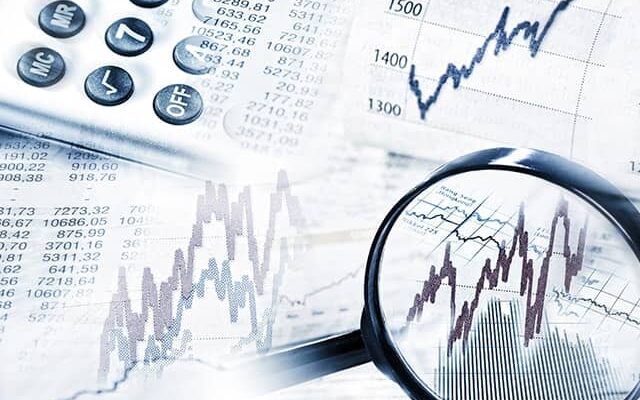(AOF) – On the Alstom site in Crespin (Nord), Xavier Bertrand, President of the Hauts-de-France Region, and Jean-Baptiste Eyméoud, President of Alstom France, unveiled, in the presence of Jérôme Bodel, Regional Director SNCF Voyageurs TER Hauts-de-France, two new rolling stock: the first Omneo Premium trainset in the Hauts-de-France region, intended to replace the Corail trains on the Paris Cambrai/Maubeuge line, as well as the first Regio 2N Hauts trainset -de-France equipped with ERTMS technology.
The Omneo Premium train presented this Tuesday in Crespin is the first of a series of 19 double-decker trains ordered in November 2018 by SNCF, on behalf of the Hauts-de-France Region. This was an exercise of options under the contract signed with SNCF in 2010 which provides for the manufacture of a maximum of 860 Omneo trains for the French Regions.
The Hauts-de-France Region intends to deploy these new Omneo Premium trains, which are more spacious and more comfortable, on the very busy lines between Paris and Amiens as well as between Paris and Saint Quentin – Maubeuge/Cambrai.
As for the Regio 2N trainset, it is currently in production at the Crespin site (North). This train is the first of an order for 33 Regio 2N ERTMS trains placed in December 2020 by SNCF on behalf of the Hauts-de-France Region.
The Hauts-de-France Region intends to deploy these new Regio 2N trains, which are more spacious and more comfortable, on the busiest lines of its network, in particular those linking Picardy to the Paris Basin. The new trains will also provide new rail services as part of the Picardie – Roissy project.
AOF – LEARN MORE
Key points
– World leader in rail transport, from trams and metros to TGVs, reinforced by the acquisition, in 2021, of Bombardier Transport;
– Activities of €15.5 billion at the end of the 2021-2022 financial year carried out 62% in Europe, 17% in the Americas, 14% in Asia-Pacific and 7% in the rest of the world;
– Offer covering all railway construction trades: rolling stock for 56% of sales, signaling for 15%, systems for 7% and services (maintenance, remote control of vehicles, networks, passengers, etc.) for 22%;
– Business model based on:
– the complementarity of geographical areas between Alstom -France, Italy, Spain, India, South-East Asia, North Africa and Brazil- and Bombardier Transport -United Kingdom, Germany, Scandinavia, China and North America,
– the creation of value ranging from the design and construction of a railway system to maintenance;
– Open capital, 17.48% owned by the Caisse de dépôt et placement du Québec, Henri Poupart-Lafarge, Chief Executive Officer, chairing the 13-member Board of Directors;
– Solid balance sheet: €9 billion in shareholders’ equity and €4.6 billion in cash compared with $2.3 billion in net debt.
Challenges
– Alstom in Motion 2024/25 growth strategy with confirmed objectives:
– annual increase of +5% in revenues, operating margin of 8 to 10% and industrial investments at 2% of revenues,
– conversion of 80% of the result into free cash flow,
– distribution to shareholders between 25 and 35%;
– Innovation strategy supported by 3.4% R&D and 9,400 patents with 3 axes:
– full range of green traction, ownership of fuel cell technology and, soon, fully connected transport fleets,
– innovation ecosystems: industrial partnerships (Engie, DeutscheBann, etc.), with start-ups via the Aster fund, with suppliers via the Alliance program, participation in 30 European programs, including Shift2Rail, and, internally, intrapreneurship with I move you,
– roll-out of the digital suite to 100% of the group;
– Environmental strategy for the decarbonization of the activity:
– integrated into the innovation strategy – eco-design of the main solutions from 2025, and aimed at strengthening natural capital – use of renewable electricity, waste recovery, recycling,
– aiming for a 10% reduction in energy intensity and a 25% reduction in CO2 emissions by 2025 (vs 2019);
– ecocircularity: waste recovered at 98%,
– launch of the 1st green guarantee facility;
– Control of portfolio rotation – disposals constrained by the merger with Bombardier and strengthening of holdings, particularly in Cylus, in Kazakhstan and in South Africa;
– Good visibility, with order intake of 10.1 billion at the end of September, ie more than 1 year of revenue.
Challenges
– After the loss incurred in 2021-22 due to provisions related to the acquisition of Bombardier Transportation, execution of the synergies of the merger with Bombardier -€200m in 2022/23, €400m per year in 2024/25 and 475- €500m thereafter – but positive impact on 2023 profit;
– Negative impact of inflation on the 2022/23 margin (80 basis points at the end of September) but low exposure to the shortage of electronic components;
– After an 8.1% increase in revenues and an 18.5% increase in operating margin in the first half ended September 30, 2022-23 outlook raised from an operating margin of 5.1 to 5, 3% and free cash flow between €100 and €300 million;
– After a dividend of €0.25 for 2021-2022, a desire for a distribution of between 25 and 35%.
Learn more about the Capital Goods sector
German autonomy not so simple
China has been Germany’s leading economic partner for six years. However, across the Rhine, companies are called upon to reduce their heavy dependence on the Asian giant due to a rise in geopolitical tensions with the country. In this context, the powerful VDMA points out the importance of the Chinese market and the danger that a too sudden termination of ties with China would represent. The country is, in fact, the second export market and the first investment destination for German mechanical and industrial engineering. The federation nevertheless recognizes the need to diversify the trading partners of the German economy.
